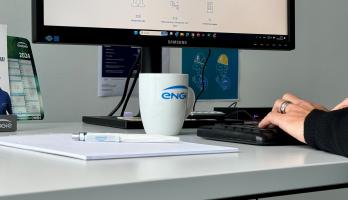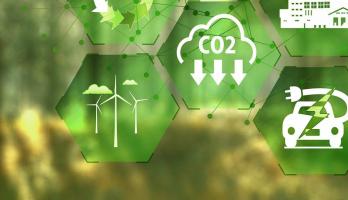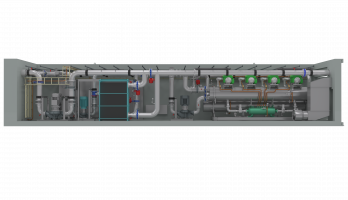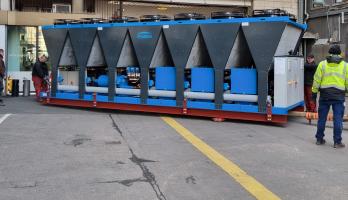
Trends in the IT sector: from sustainability requirements to edge data centres
Trends revitalise the IT sector. This is because they drive innovation, secure competitive advantages and enable long-term business success. As a cooling and heating expert for data centres and especially for edge data centres, ENGIE Refrigeration knows current trends inside out - and is even ahead of them thanks to future-oriented technologies. Jürgen Martin, Key Account Manager Data Centres at ENGIE Refrigeration, shares his expert assessment of the most important market developments in the data centre sector in 2025.
Jürgen, the data centre sector is changing rapidly. What trends do you see at the moment?
Jürgen: I see the growing demand for computing power as one of the relevant trends in the IT sector. There are several reasons for this: First of all, more and more companies are focusing on data-driven business models that massively increase computing capacity. These include, for example, AI models such as deep learning and specialised AI chips from various providers. On the other hand, security and consequently data encryption are becoming increasingly important. But data protection requirements and encrypted communication require enormous amounts of data. Increasing computing power in turn leads to greater energy consumption and higher production of waste heat. At ENGIE Refrigeration, we counteract these consequences in a targeted manner - with our chillers and heat pumps for data centres and especially for edge data centres.
Which energy-efficient solutions are generally suitable for IT buildings, and where can they be found in the ENGIE Refrigeration portfolio?
Jürgen: Direct Liquid Cooling (DLC) is increasingly being used to make good use of waste heat in both data centres and edge data centres. With this cooling technology, which is also a trend in the IT industry, liquid is channelled directly to the heat-generating components in order to efficiently dissipate the resulting heat. Water-cooled chillers, such as our QUANTUM Water, are a central component of DLC systems. As the most efficient water-cooled chiller series on the market, this series fulfils ecological requirements in an exemplary manner. The principle of heat recovery, which we offer with QUANTUM Water, QUANTUM Air and PENSUM Air, is just as effective. Our cooling and heating solutions utilise waste heat in a targeted manner and reduce CO2 emissions and operating costs.
Interesting. What other trends are you observing in the IT industry?
Jürgen: Efficiency and sustainability are naturally at the top of the agenda. This is due in particular to the Energy Efficiency Act, which now makes the sustainable alignment of the energy structure in data centres and edge data centres unavoidable. As cooling accounts for a large proportion of energy consumption, we at ENGIE Refrigeration can also point out technical perspectives here. After all, energy efficiency runs through our entire product portfolio - from our QUANTUM series to SPECTRUM Water and thermeco2. We are also future-proof when it comes to refrigerants, as we cover a broad portfolio. This means we offer the right solution for every requirement - for example with our brand new AMONUM Air chiller with the natural refrigerant ammonia. Together with our customers, we are making a sustainable difference on the road to climate neutrality.
Speaking of differences: How are the situation and performance of data centres currently changing? There also seems to be a lot going on
Jürgen: Indeed. The egde data centre is becoming increasingly relevant and is thus setting further trends in the IT sector. Here, data are processed in a decentralised way directly at the edge of the network and thus distributed as close as possible to end users. Why is this solution so popular? The edge data centre has lower latency times as the data do not have to be sent to a central cloud first. This is a major advantage, particularly in view of the growing volumes of data. The edge data centre also scores points in terms of data protection, as critical data remain local instead of travelling long distances to the central cloud. Edge applications of this kind are convincing in various sectors - from manufacturing and the automotive industry to healthcare.
And which cooling solutions from ENGIE Refrigeration do you recommend for the edge data centre?
Jürgen: Our GENIUM cooling container definitely scores points here. The turnkey solution promises low installation costs and flexible transport. And even better: GENIUM is already equipped with all the components that ensure a smooth cooling supply in the edge data centre. In addition, the cooling container in combination with our chillers easily fulfils the PUE (Power Usage Effectiveness) value of maximum 1.2 specified in the Energy Efficiency Act. This means that data centre operators are perfectly prepared for the future and can efficiently keep up with the trends in the IT sector.
Jürgen, thank you very much for the exciting insights!









